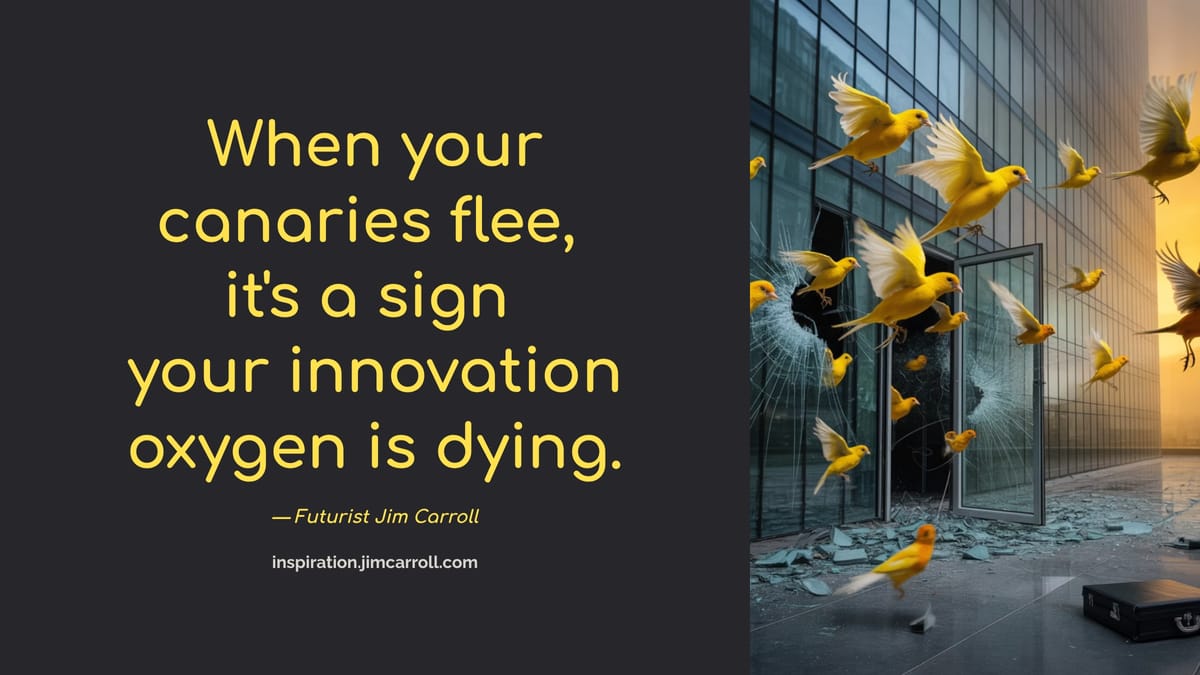"When your canaries flee, it's a sign your innovation oxygen is dying." - Futurist Jim Carroll
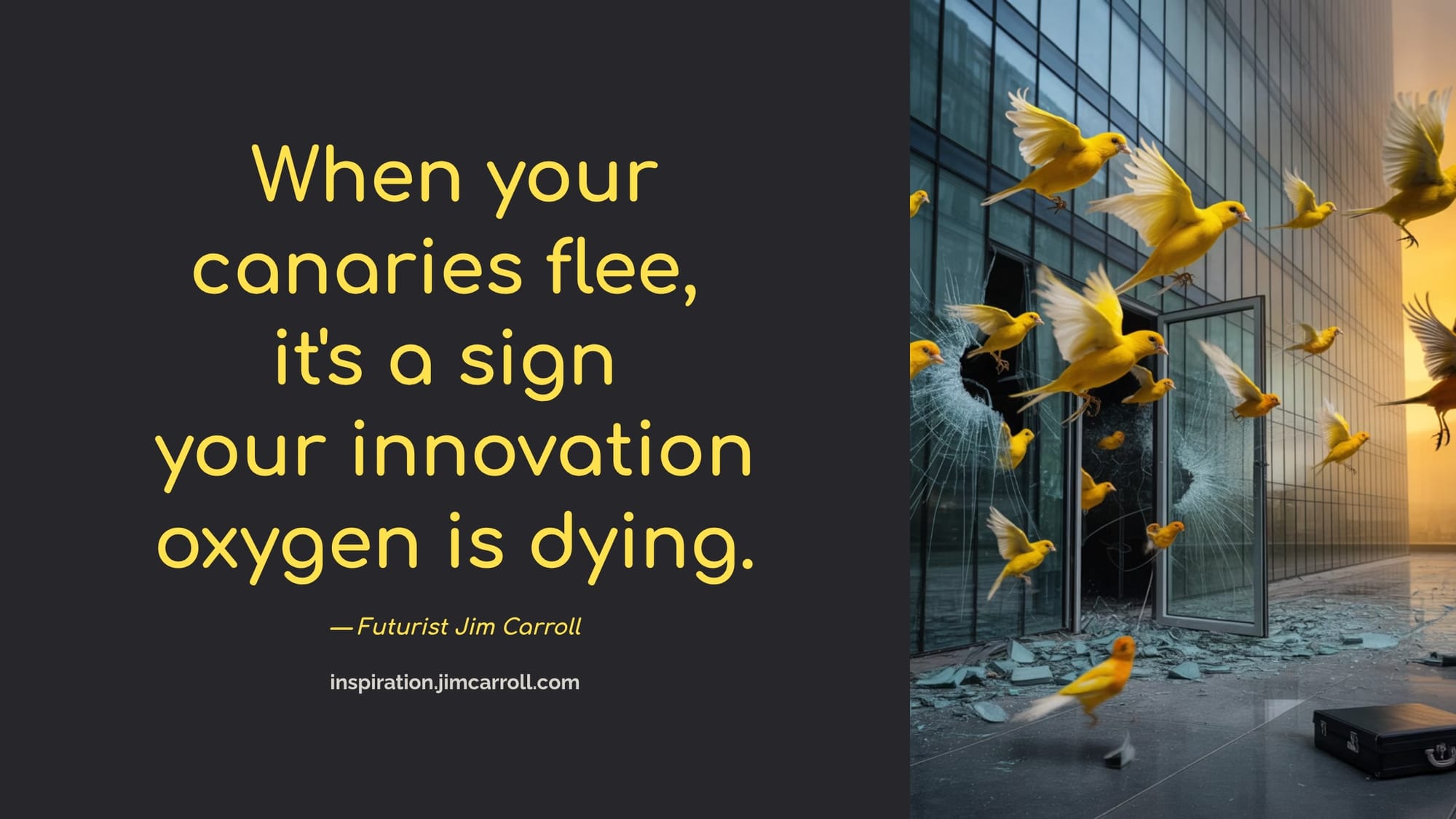
As CEOs rush to get their people back to the office, they are forgetting one key thing: the best ones aren't excited about coming back to widely dysfunctional organizations. And since they have the skills that are needed the most, they'll choose who to work for, where they'll do the work, and the corporate 'culture' they'll choose to subscribe to.
In other words, the CEOs still aren't necessarily in charge.
What's my point? You departed talent knows your future. Are you listening?
When your best people—your canaries—flee, it means your innovation's oxygen is gone, and only the suffocating routine of your failure is left. I've stood on stage in front of countless leadership teams, and I often tell them a stark truth: your company's most profound insights into the future aren't coming from a market research report. They're walking out your door every single day.
Over the years, I've spent a lot of time thinking, speaking, and writing about this issue, and I continue to see it play out in real time. It goes back as far as 1997 when I wrote about the idea of 'nomadic workers' in my book Surviving the Information Age, noting:
The workforce is transformed as “nomadic workers” dominate the economy.
The number of full-time jobs will continue to dramatically shrink – yet, we are only seeing the tip of the iceberg in the change of the relationship between employer and employee. Companies will hire the best talent, regardless of where that person might be. A new form of career competitiveness is emerging, with extreme competition for this group of nomadic workers, highly skilled individuals who call the shots.
All this in the context of a global economy in which where people work won’t matter – a trend that has implications for the future of both rural and urban economies. Lifestyle choice will come to dominate career decisions.
The nomadic worker carries different attitudes towards life and work, and rejects many of the currently accepted “norms” of the corporate environment. Their attitudes will revolutionize the world of work.
The result? The shape of tomorrow’s company won’t be defined by the walls in its offices – it will be defined by the reach of its computerized knowledge network, and its ability to tap into the skills and capabilities of the nomadic worker, at the right time, in the right place, for the right purpose.
I've covered it extensively since then, and most of my predictions have played out. Today? Check the LONG blog post I wrote in 2022 for my 23 Trends for 2023 series - Entrenched Workback Pushback. I commented:
Most companies are on a path to get key employees back to the office. Return to work is the beating drum.
The problem is that many of those key employees – highly skilled, in huge demand – have tasted freedom, and don’t want to go back. And in the context of trend #8 – Knowledge Velocity – they are in the ‘driver’s seat.'
Despite all the current drumbeat about the return to the office, I still believe this to be true, and it is a critically important topic right now. I've prepared a pretty detailed PDF that goes into my post below. Read it, share it, ponder it. It's right here.
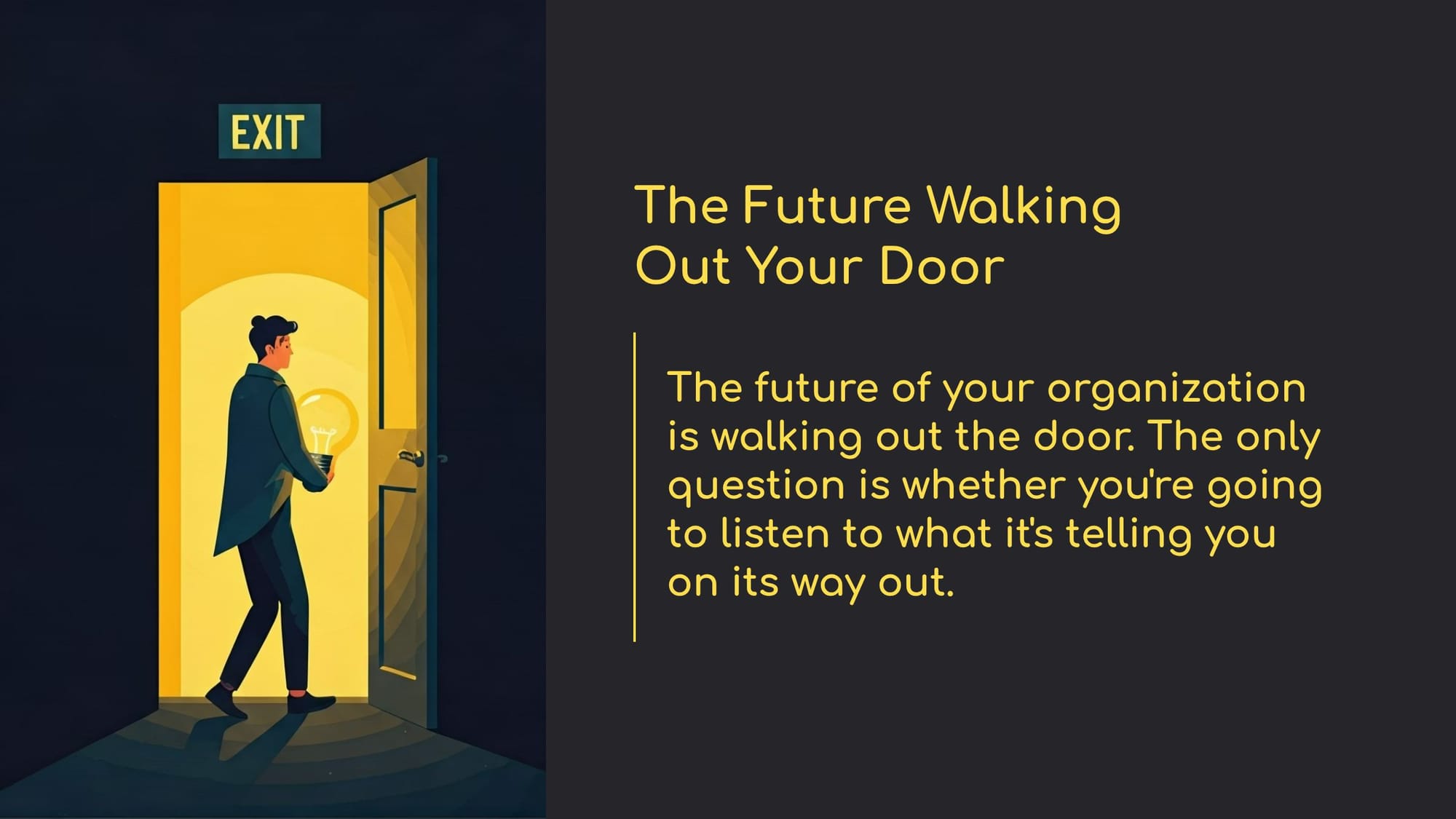
I call them "industry expatriates," a phrase I coined in my book Ready, Set, Done! in 2007.
These aren't just employees who found a better salary. These are your passionate visionaries, your rebels, your future-builders. They are the ones who became so fundamentally frustrated with the institutional sclerosis and the corporate antibodies that attack every new idea that they left. They didn't just quit a job; they went out and founded the very companies that will disrupt you tomorrow.

They are your canaries in the coal mine, and the silence you hear after they leave is the sound of your future suffocating.
It's in that context that I believe we are witnessing what I might call "The Great Miscalculation," in which CEOS and companies are forcing a return to a broken culture. We see this trend accelerating, with leaders making bold declarations. A recent memo from AT&T's CEO John Stankey, for instance, demanded that 60,000 managers return to the office, many of whom will have to relocate to one of just nine locations or find a new job.
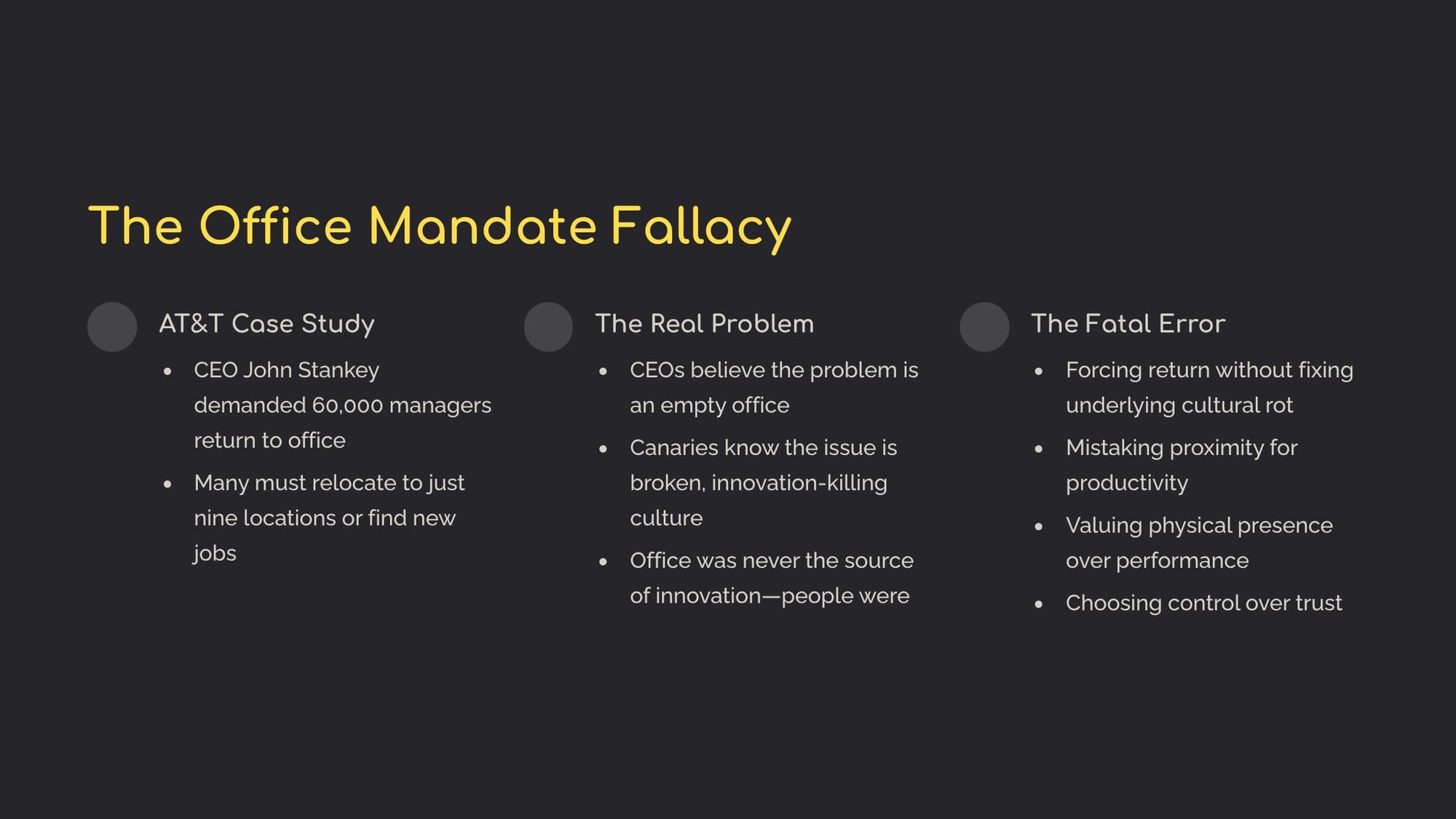
These mandates are built on a dangerous misassumption: that the best people will simply comply.
They won't.
CEOs believe the problem is an empty office, but your canaries know the real issue is the broken, innovation-killing culture they'd be returning to. The office was never the source of innovation; the people were. Forcing them back into the same frustrating environment without fixing the underlying cultural rot is a fatal error.
The data is certainly clear. A recent Gallup report found that 9 out of 10 remote-capable employees do not want to return to the office full-time. Forcing them back isn't a strategy for collaboration; it's a strategy for attrition. Your canaries—your most valuable, autonomous, and high-impact employees—have proven they can deliver from anywhere. They thrive on trust and autonomy, not on a culture of surveillance disguised as "collaboration." Forcing them back to a desk simply tells them you don't trust them.
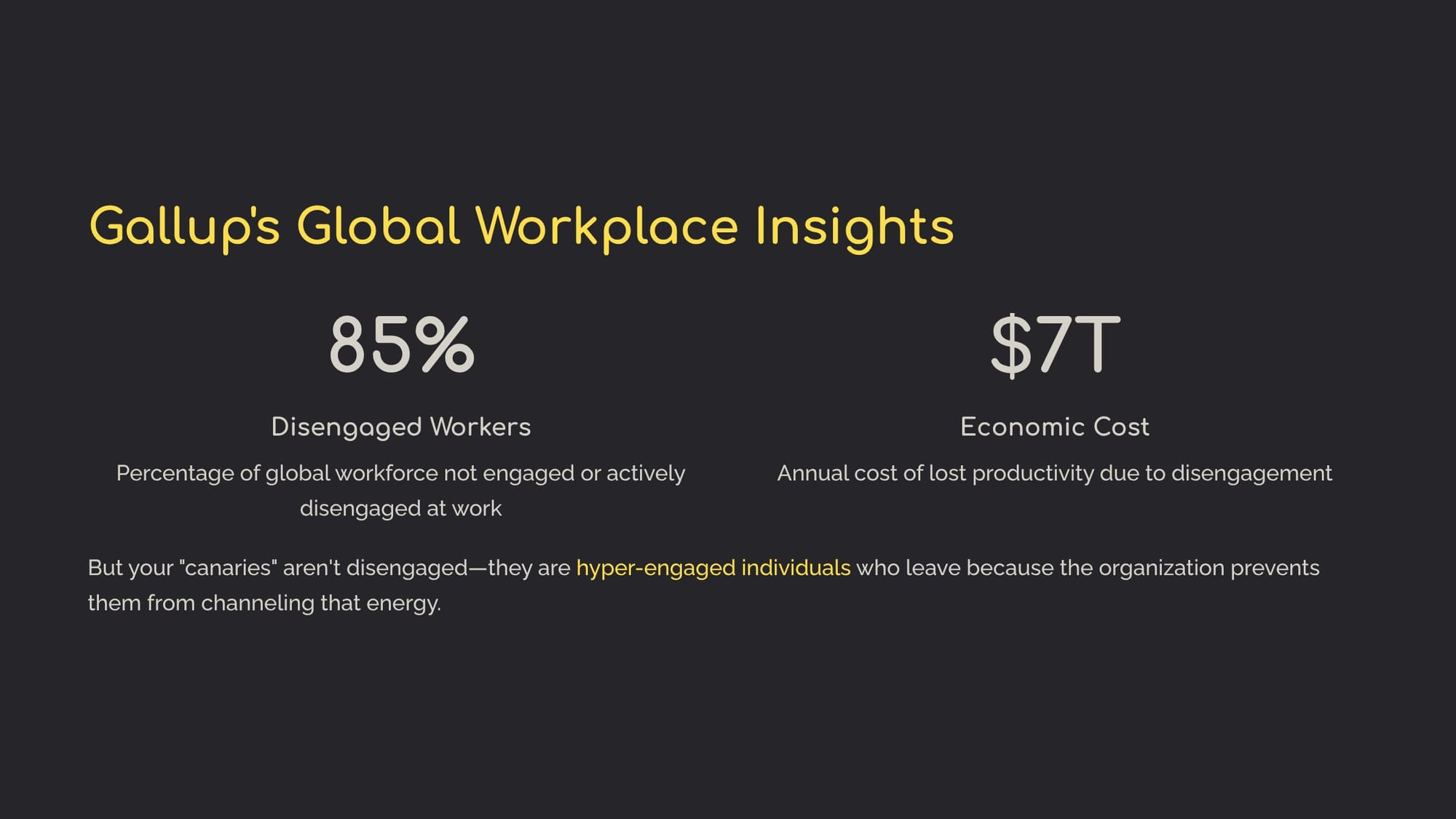
Forcing a return to the office doesn't fix a toxic culture; it magnifies it. It tells your best people that you value physical presence over performance and control over trust. Leaders mistake proximity for productivity, and in doing so, they are actively pumping more toxic gas into the mine.
And the toxic gas is the one that kills innovation, stifles ideas, and holds back creativity. I've always said, "Innovation isn't an item on the agenda; it's the oxygen that keeps an organization from suffocating on its routine." And the exodus of your top innovators is the most critical sign that your oxygen levels are dangerously low.
What's the "Suffocating Routine"? It's the risk-averse culture that worships yesterday's success. It's the soul-crushing meetings where bold ideas go to die. It's the management chorus of "that's not how we do things here." It's all the things I identify on my list of Innovation Killers - remember, that's at innovationkillers.jimcarroll.com. Your organization is choking on its legacy, and the departure of its most forward-thinking people is the gasp for air you can't afford to ignore.
So, what's the "Oxygen"? It's the raw, unfiltered truth that your rebels possess. A future-ready leader doesn't just hand off a meaningless HR exit interview. They hunt down these expatriates. They take them for coffee. They listen with ferocious intensity to the very ideas their own culture rejected. A leader who ignores this exodus is choosing to stay in the mine as the air thins out. A leader who listens is breathing in the pure oxygen of innovation, getting a priceless, early look at the disruptive future they must embrace to survive.
Think this is just a theory? The landscape of modern business is littered with the ghosts of companies that ignored their canaries.
- The "PayPal Mafia": After being acquired by eBay, the brilliant minds behind PayPal's success found the new corporate culture too restrictive. So they left. That group included the people who would go on to create Tesla, SpaceX, LinkedIn, Palantir, and YouTube. They didn't just leave a company; they left to build the next decade of technological innovation. eBay had the talent to own the future, but its routine suffocated their vision.
- Adobe vs. Xerox: In the '70s, researchers at Xerox PARC developed world-changing technology for digital printing. Xerox management, however, couldn't see its potential. So the researchers, John Warnock and Charles Geschke, left to found Adobe. Xerox had the future in its hands and let it walk out the door. A classic case of institutional blindness.
- WhatsApp vs. Yahoo: Tired of Yahoo’s obsession with an ad-based revenue model, engineers Jan Koum and Brian Acton departed. They built WhatsApp on the radical premise of user privacy and an ad-free experience. They saw a future their former employer was blind to, and in doing so, created a multi-billion-dollar company.
For those of you who need the hard numbers, the data is screaming this story at you.
Gallup’s reports on the global workplace show a workforce crippled by disengagement. But your "canaries" aren't disengaged—they are hyper-engaged individuals who leave because the organization prevents them from channeling that energy. Their departure isn't quiet quitting; it's a loud declaration that your company is no longer the place where the future is built.
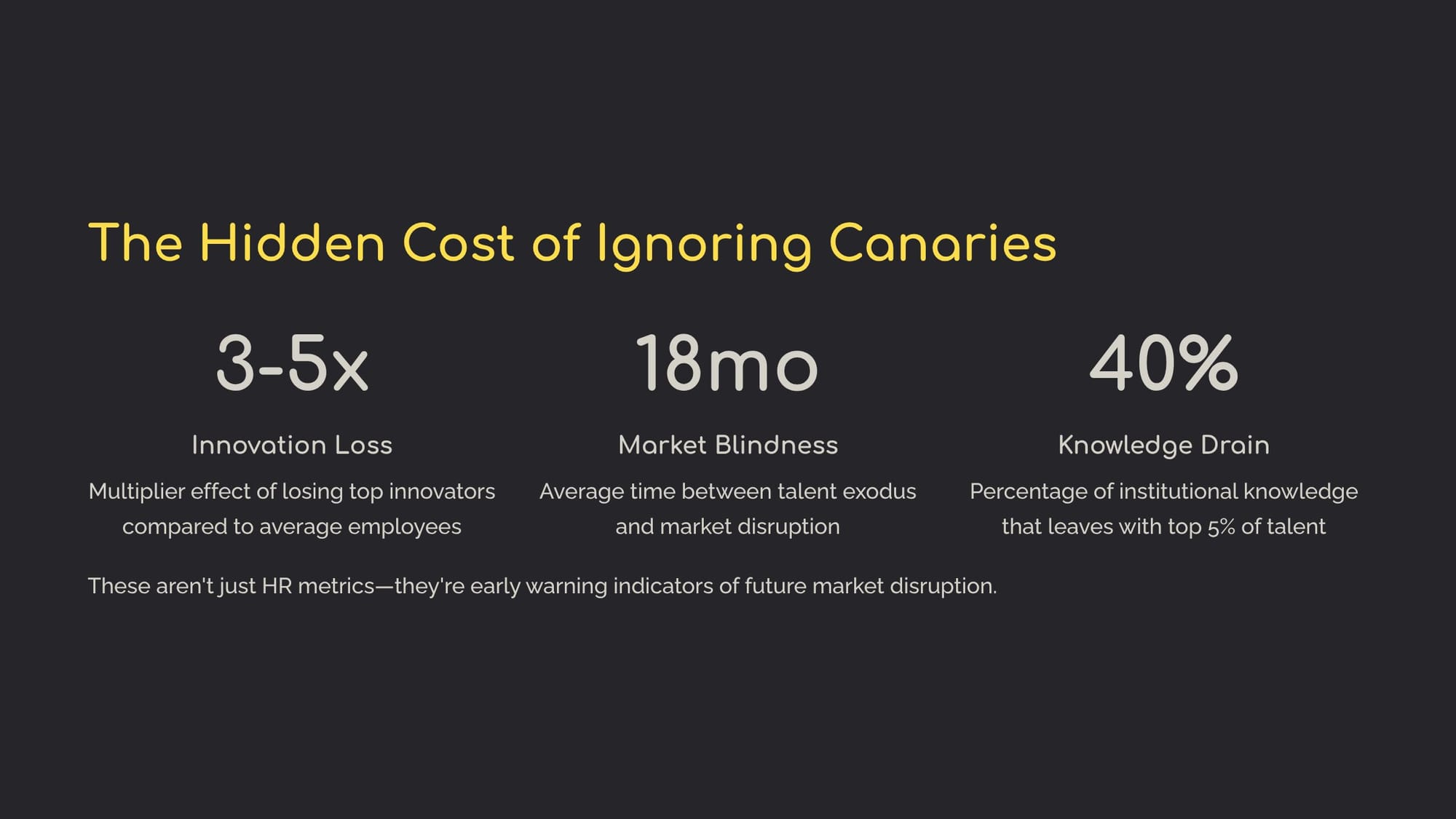
Academics have a term for this: "Entrepreneurial Spawning." I call it "training your own assassins." Studies from MIT and others confirm that a primary source of disruptive new companies is the talent that leaves rigid, established firms. Your bureaucracy isn't just inefficient; it's an incubator for your future competition.
The question you need to ask yourself is this: Who has left your organization in the last two years? Where did they go? More importantly, what are they building now?

Don't just track who is leaving. Track what they do next.
Their new venture is your roadmap to the disruption you failed to embrace. The future of your organization is walking out the door.
The only question is whether you're going to listen to what it's telling you on its way out.
Futurist Jim Carroll became a nomadic worker in 1989, leaving the stifling innovation-adverse culture of the global professional services firm he had been with for a decade. Since then, he's provided his skills and insight to thousands of globally recognized organizations.

